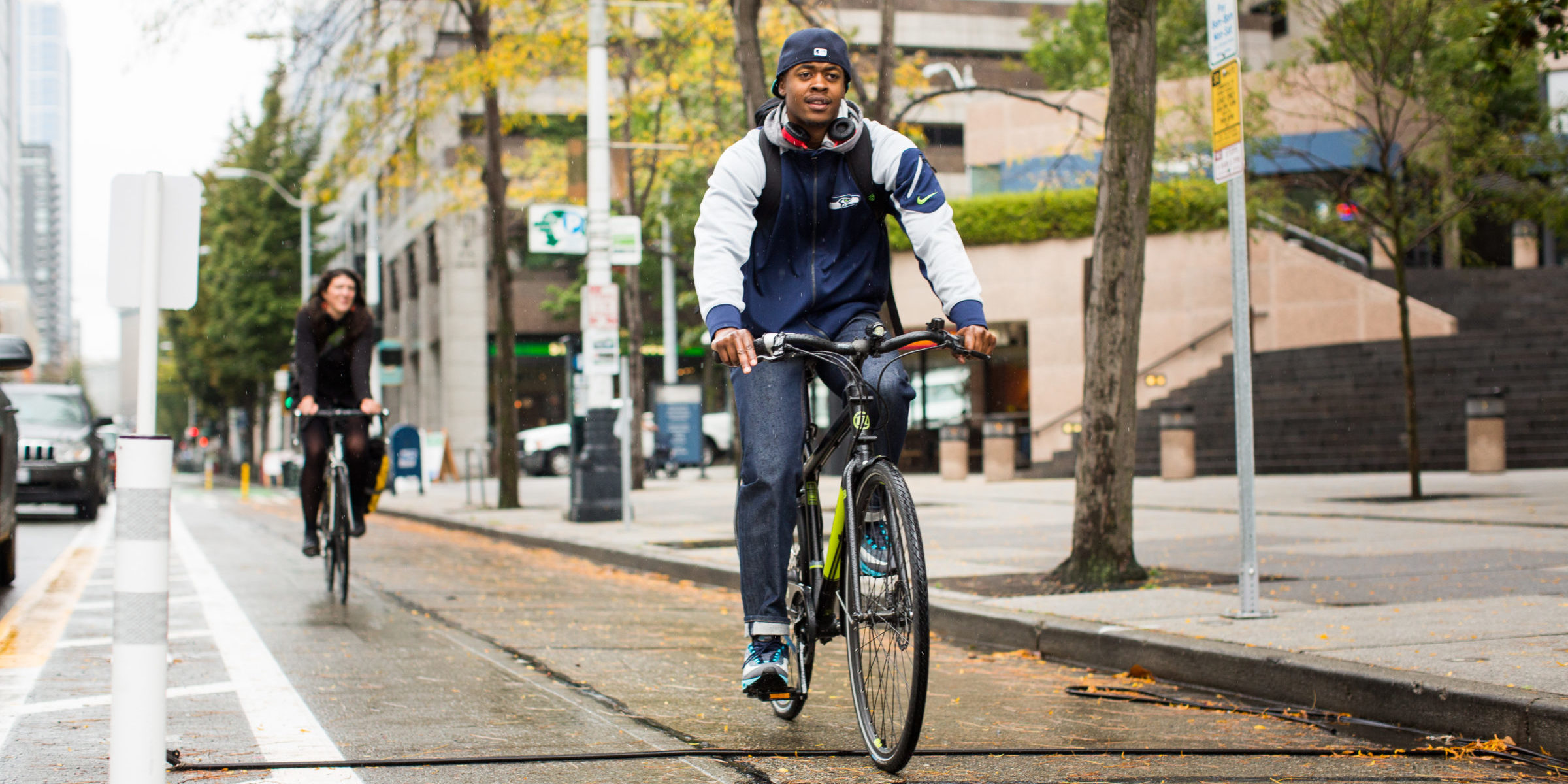Protected Bicycle Lanes

2nd Street, Seattle (photo credit: Adam Coppola for PeopleForBikes)
Protected bike lanes (including raised bikeways) create All Ages & Abilities conditions by using physical separation to create a consistently exclusive, designated bicycling space. The physical protection offered by protected bike lanes means that they can often meet the All Ages & Abilities criteria even in higher speed, high volume, or unpredictable conditions. Protected bike lanes improve the overall organization of the street, and increase safety for people walking, bicycling, and in motor vehicles.
What to do:
Build protected bike lanes where motor vehicle speed consistently exceeds 25 mph, where daily motor vehicle volume is higher than approximately 6,000 vehicles per day, where curbside conflicts are expected, or wherever there is more than one motor vehicle lane per direction.
Manage intersection and curbside conflicts with transit boarding islands, protected (bend-out or offset) intersection designs, signal phasing, and other turn management strategies.
Reduce speeds through operational strategies, such as signal time, lower signal progression, and shorter signal cycles.
On streets with parking, reverse the position of the parking and the bike lane to create physical separation between the bike lane and moving motor vehicle traffic.
On streets without parking, add vertical separation elements (e.g. delineators, barriers, raised curbs) in an existing buffer, or raise existing curbside bike lanes.
On streets with multiple motor vehicle lanes in each travel direction, convert one travel lane to a protected bike lane, better organizing the street and improving safety for people biking, walking and driving.
Convert conventional or buffered lanes to protected lanes if motor vehicle speeds and volumes cannot be otherwise reduced and where there is high curbside activity or peaks of intensive demand such as retail-heavy streets, or around schools, large employers, institutions, and entertainment districts.